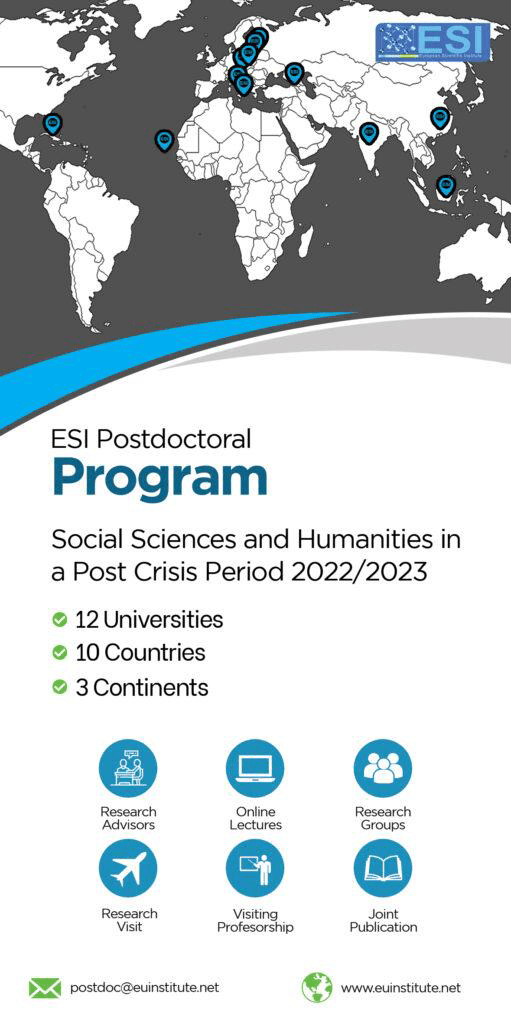Leveraging Dynamic Capabilities to Overcome Financing Barriers and Drive Sustainability of Solar Social Enterprises in Kenya
Abstract
This study examined how financing and dynamic capabilities, affect the sustainability of solar social enterprises (SSEs) in Nairobi County, Kenya. Against the backdrop of persistent energy access challenges in sub-Saharan Africa, the research aimed to find out how SSEs navigate financing barriers and leverage dynamic capabilities to achieve sustainable growth. Employing a qualitative case study approach, the study draws on in-depth interviews with SSE founders and managers, triangulated with business documents and sectoral reports. Key findings reveal that SSEs face significant obstacles in accessing finance, including perceived bias, banks’ risk aversion, and rigorous due diligence requirements - challenges that disproportionately affect locally owned enterprises. The study found entrepreneurial alertness, strategic agility and resource orchestration as the entrepreneurial dynamic capabilities enabling SSEs to mobilize resources, adapt to market shifts, and sustain operations. The study concludes that adapting financing models to local contexts and supporting the development of dynamic capabilities are vital for the long-term growth of SSEs. Interventions fostering inclusive investment and capacity-building are recommended to advance sustainable growth in Kenya’s dynamic solar sector.
Downloads
Metrics
References
2. ACE TAF & Open Capital Advisors. (2020). Access to consumer finance for vulnerable groups: One size does not fit all. Tetra Tech International Development.
3. Acs, Z., Szerb, L., Lafuente, E., & Lloyd, A. (2019). Global entrepreneurship and development index 2019. GEDI Institute.
4. Adwek, G., Boxiong, S., Ndolo, P. O., Siagi, Z. O., Chepsaigutt, C., Kemunto, C. M., Arowo, M., Shimmon, J., Simiyu, P., & Yabo, A. C. (2019). Solar energy access in Kenya: A review focusing on Pay-As-You-Go solar home system. Environment, Development and Sustainability, 22(5), 3897–3938. https://doi.org/10.1007/s10668-019-00372-x
5. Alvedalen, J., & Boschma, R. (2017). A critical review of entrepreneurial ecosystems research: Towards a future research agenda. European Planning Studies, 25, 887–903.
6. Arruda, C., Nogueira, V. S., & Costa, V. (2013). The Brazilian entrepreneurial ecosystem of startups: An analysis of entrepreneurship determinants in Brazil as seen from the OECD pillars. Journal of Entrepreneurship and Innovation Management, 2(3), 17–57.
7. Asoko Insight. (2020, September 19). Kenya solar power players. Asoko Insight. https://www.asokoinsight.com/content/market-insights/kenya-solar-power-players
8. Bhamidipati, P., Pedersen, M., Njoroge, H., Strange, L., Nygaard, I., & Hansen, U. (2021). Local value capture from the energy transition: Insights from the solar PV industry in Kenya. UNEP DTU Partnership. https://unepdtu.org/wp-content/uploads/2021/06/local-value-capture-from-the-energy-transition-insights-from-the-solar-pv-industry-in-kenya.pdf
9. Bhardwaj, R., & Srivastava, S. (2021). Dynamic capabilities of social enterprises: A qualitative meta-synthesis and future agenda. Journal of Social Entrepreneurship, 1–29. https://doi.org/10.1080/19420676.2021.1972030
10. Bramann, J. U. (2017). Building ICT entrepreneurship ecosystems in resource-scarce contexts: Learnings from Kenya’s “Silicon Savannah”. In B. Ndemo, & T. Weiss (Eds.), Digital Kenya: An entrepreneurial revolution in the making (pp. 227–264). Palgrave Macmillan.
11. Breznitz, D., & Taylor, M. (2014). The communal roots of entrepreneurial–technological growth – social fragmentation and stagnation: Reflection on Atlanta’s technology cluster. Entrepreneurship & Regional Development, 26(3-4), 375–396. https://doi.org/10.1080/08985626.2014.918183
12. British Council. (2017). The state of social enterprise in Kenya. British Council. https://www.britishcouncil.org/sites/default/files/state_of_social_enterprise_in_kenya_british_council_final.pdf
13. British Council, & Social Enterprise UK. (2022). More in common: The global state of social enterprise. In britishcouncil.org. British Council. https://www.britishcouncil.org/sites/default/files/more_in_common_global_state_of_social_enterprise.pdf
14. Bruton, G. D., Zahra, S. A., & Cai, L. (2018). Examining entrepreneurship through indigenous lenses. Entrepreneurship Theory and Practice, 42(3), 351–361.
15. Busch, C. & Barkema, H. (2019). Social entrepreneurs as network orchestrators: A framework and research agenda on networks and leadership in the context of social innovation. In G. George, T. Baker, P. Tracey & H. Joshi (Eds.), Handbook of inclusive innovation. Elgar Online.
16. Chaux, M., & Okune, A. (2017). The challenges of technology entrepreneurship in emerging markets: A case study in Nairobi. In B. Ndemo, & T. Weiss (Eds.), Digital Kenya: An entrepreneurial revolution in the making. Palgrave Macmillan.
17. Chirchietti, N. (2017). The role of innovation hubs taking start-ups from idea to business: The case of Nairobi, Kenya. (IZNE Working paper No. 17/7). Hochschule Bonn-Rhein-Sieg University of Applied Sciences.
18. Clover, I. (2016, January 12). BBOXX and Oikocredit bring securitization to off-grid African solar. PV Magazine . https://www.pv-magazine.com/2016/01/12/bboxx-and-oikocredit-bring-securitization-to-off-grid-african-solar_100022736/
19. Corbin, J., & Strauss, A. (2015). Basics of qualitative research: Techniques and procedures for developing grounded theory (4th ed.). Thousand Oaks, CA: Sage Publications
20. Cross, J., & Murray, D. (2018). The afterlives of solar power: Waste and repair off the grid in Kenya. Energy Research and Social Science, 44, 100–109. https://doi.org/10.1016/j.erss.2018.04.034.
21. Dejardin, M., Raposo, M. L., Ferreira, J. J., Fernandes, C. I., Veiga, P. M., & Farinha, L. (2022). The impact of dynamic capabilities on SME performance during COVID-19. Review of Managerial Science, 17. https://doi.org/10.1007/s11846-022-00569-x
22. Doz, Y., and M. Kosonen. 2010. “Embedding Strategic Agility: A Leadership Agenda for Accelerating Business Model Renewal.” Long Range Planning 43, no. 2–3: 370–382
23. ESMAP, GOGLA & Dalberg (2024). Off-Grid Solar Market Trend Report 2024. Washington, DC: The World Bank. https://www.esmap.org/Off-Grid_Solar_Market_Trends_Report_2024
24. Fabrizio, K.R., et al. (2021).
25. Gioia, D. A., Corley, K. G., & Hamilton, A. L. (2013). Seeking qualitative rigor in inductive research. Organizational Research Methods, 16(1), 15–31. https://doi.org/10.1177/1094428112452151
26. Hain, D. S., & Jurowetzki, R. (2018). Local competence building and international venture capital in low-income countries: Exploring foreign high-tech investments in Kenya’s Silicon Savanna. Journal of Small Business and Enterprise Development, 25(5), 447–482. https://doi.org/10.1108/JSBED-03-2017-0092
27. Hellqvist, L., & Heubaum, H. (2024). Energising equality: The impact of globalisation on women’s empowerment in Kenya’s renewable energy sector. Research in Globalization, 9, 100251. https://doi.org/10.1016/j.resglo.2024.100251
28. Hernández-Linares, R., Kellermanns, F. W., & López-Fernández, M. C. (2018). Dynamic Capabilities and SME Performance: The Moderating Effect of Market Orientation. Journal of Small Business Management, 59(1). https://doi.org/10.1111/jsbm.12474
29. Intellecap. (2015). Closing The Gap Kenya: Update on key challenges for the ‘missing middle’ in Kenya. Intellecap.
30. Intellecap. (2019). Kenya impact investment landscape. Intellecap.
31. Ireri, B., & Shirley, R. (2021, September). Powering growth. Finance and Development, 62–64. https://www.imf.org/en/Publications/fandd/issues/2021/09/fighting-climate-change-in-Africa-ireri
32. Kenya National Bureau of Statistics. (2017). Micro, small and medium establishments: Basic report. KNBS. https://www.knbs.or.ke/?wpdmpro=2016-msme-basic-report
33. Kyalo, D., Gitau, F., Kim, S., & Almaguer, F. (2023). Entrepreneurial ecosystem snapshot: Green entrepreneurship in Kenya. Aspen Network of Development Entrepreneurs . https://andeglobal.org/wp-content/uploads/2023/02/ANDE_Ecosystem-Snapshot_Green-Entrepreneurship-in-Kenya.pdf
34. Littlewood, D., & Holt, D. (2018). Social enterprise resilience in sub-Saharan Africa. Business Strategy & Development, 1(1), 53–63. https://doi.org/10.1002/bsd2.11
35. Littlewood, D., & Holt, D. (2018). Social enterprise resilience in sub-Saharan Africa. Business Strategy & Development, 1(1), 53–63. https://doi.org/10.1002/bsd2.11
36. Luo, Y., & Rui, H. (2009). An ambidexterity perspective towards multinational enterprises from emerging economies. Organization Science, 13, 48-63.
37. Mafimisebi, O. P., & Nyame-Asiamah, F. (2021). A new look at case study approach in African entrepreneurship research. In O. Kolade, D. Rae, D. Obembe, & Woldesenbet B. (Eds.), The Palgrave Handbook of African Entrepreneurship (pp. 595–618). Palgrave Macmillan. https://doi.org/10.1007/978-3-030-75894-3_24
38. Manwari, L., Ngare, P., & Kipsang, R. (2017). Access to finance for women entrepreneurs in Kenya: Challenges and opportunities . Journal of Emerging Trends in Economics and Management Sciences, 8(1). https://doi.org/10.10520/EJC-803c7be1e
39. Mason, C., & Brown, R. (2014, November 7). Entrepreneurial ecosystems and growth-oriented entrepreneurship [Conference presentation]. Workshop rganized by the OECD LEED Programme and the Dutch Ministry of Economic Affairs, The Hague, Netherlands. https://www.oecd.org/cfe/leed/entrepreneurial-ecosystems.pdf
40. McEachran, R. (2013). McEachran, R. (2013, December 3). African social enterprises pave the way for solar power while stimulating the local economy. The Guardian. https://www.theguardian.com/social-enterprise-network/2013/dec/03/african-social-enterprises-solar-power
41. Miller Center for Social Entrepreneurship. (2015). Universal energy access: An enterprise system approach. Santa Clara University. https://www.millersocent.org/wp-content/uploads/2020/01/UniversalEnergyAccess-MillerCenterWhitePaperEditedUnitedNationspg.11.pdf
42. Mungai, F., & Peacock, C. (2019, July 16). Impact investment favours expats over African entrepreneurs. Here’s how to fix that. World Economic Forum. OECD. (2017).
43. Park, E., Martins, R. M., Hain, D. S., & Jurowetzki, R. (2017). Mapping entrepreneurial ecosystem for technology start-ups in developing economies: An empirical analysis of Twitter networks between start-ups and support organizations of Nairobi’s digital economy. In: C. Daniels, M. Dosso, & J. Amadi-Echendu (Eds.), Entrepreneurship, technology commercialisation, and innovation policy in Africa, pp. 55–97. Springer. https://doi.org/10.1007/978-3-030-58240-1_4
44. Park, J. (2021). Theorizing and learning from Kenya’s evolving solar energy enterprise development. Energy Research & Social Science, 81, 102254. https://doi.org/10.1016/j.erss.2021.102254
45. Phillips, J., Plutshack, V., & Yeazel, S. (2020). Lessons for modernizing energy access finance, Part 1: What the electrification experiences of seven countries tell us about the future of connection costs, subsidies and integrated planning. Duke University. https://energyaccess.duke.edu/publication/learning-from-the-past/
46. Power Africa (2023) Demystifying securitization for solar pay-as-you-go companies. Power Africa.
47. Rashid, S., & Ratten, V. (2021). Entrepreneurial ecosystems during COVID-19: The survival of small businesses using dynamic capabilities. World Journal of Entrepreneurship, Management and Sustainable Development, 17(3), pp. 457 –476. https://doi.org/10.1108/wjemsd-09-2020-0110
48. Riviere, M., Bass, A. E., & Andersson, U. (2020). Dynamic capability development in multinational enterprises: Reconciling routine reconfiguration between the headquarters and subsidiaries. Global Strategy Journal, 11(2). https://doi.org/10.1002/gsj.1389
49. Roundy, P.T., Harrison, D.A., Khavul, S., Pérez-Nordtvedt, L. and McGee, J.E. (2018). “Entrepreneurial alertness as a pathway to strategic decisions and organizational performance”, Strategic Organization, Vol. 16 No. 2, pp. 192-226.
50. Sanyal, S., Chen, C. & Caldwell, M. (2020). The impact investors’ blind spot: Local clean energy entrepreneurs in Kenya. (Working paper). World Resources Institute. https://www.wri.org/research/impact-investors-blind-spot-local-clean-energy-entrepreneurs-kenya
51. Sanyal, S., Prins, J., Visco, F., & Pinchot, A. (2016). Stimulating pay-as-you-go energy access in Kenya and Tanzania: The role of development finance. World Resources Institute. https://www.gogla.org/sites/default/files/recource_docs/stimulating_pay-as-you-go_energy_access_in_kenya_and_tanzania_the_role_of_development_finance.pdf
52. Shepherd, D. A., Parida, V., & Wincent, J. (2020). Entrepreneurship and poverty alleviation: The importance of health and children’s education for slum entrepreneurs. Entrepreneurship Theory and Practice, 45(2). Sage Journals. https://doi.org/10.1177/1042258719900774
53. Sottini, A., Littlewood, D., & Ciambotti, G. (2020). Building sustainable business models in the BoP: Evidence from social enterprises in East Africa. Academy of Management Proceedings, 2020(1), 20654. https://doi.org/10.5465/ambpp.2020.20654abstract
54. Spigel, B. (2017). Spigel, B. (2017). The relational organization of entrepreneurial ecosystems. Entrepreneurship Theory and Practice, 41(1), 49–72. https://doi.org/10.1111/etap.12167
55. Strauss, A., & Corbin, J. (1998). Basics of qualitative research: Techniques and procedures for developing grounded theory (2nd ed.). Sage Publications, Inc.
56. Tang, J., Kacmar, K.M. and Busenitz, L. (2012), “Entrepreneurial alertness in the pursuit of new opportunities”, Journal of Business Venturing, Vol. 27 No. 1, pp. 77-94.
57. Teece, D., Pisano, G., & Shuen. A. (1997). Dynamic capabilities and strategic management. Strategic Management Journal 18(7), 509–533. doi:10.1002/(SICI)1097- 0266(199708)18:7
58. Teece, D. J. (2007). Explicating dynamic capabilities: The nature and microfoundations of (sustainable) enterprise performance. Strategic Management Journal, 28(13), 1319–1350. https://doi.org/10.1002/smj.640
59. Teece, D. J. (2014). A dynamic capabilities-based entrepreneurial theory of the multinational enterprise. Journal of International Business Studies, 45(1), 8–37. https://doi.org/10.1057/jibs.2013.54
60. Ullah, S. (2019). The effect of entrepreneurial ecosystems on performance of SMEs in low middle-income countries with a particular focus on Pakistan [Doctoral thesis, Lancaster University]. EthOS. https://ethos.bl.uk/OrderDetails.do?uin=uk.bl.ethos.778308
61. White, S. (2022). White, R. (2022). The African action toward social transformation. African Journal of Social Transformation, 1(1). https://journals.tangaza.ac.ke/index.php/AJST/article/view/3
62. World Bank. (2017). World Bank. (2017b). Kenya off-grid solar access project (KOSAP): Vulnerable and marginalised groups framework. World Bank.
Copyright (c) 2025 Esther Kahinga, Daniel Kitonga, Lucy Kinyua

This work is licensed under a Creative Commons Attribution 4.0 International License.








